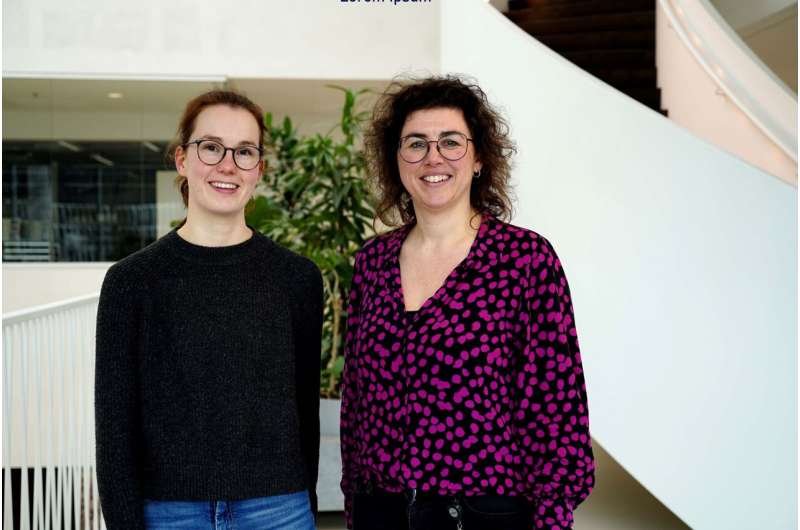This article has been reviewed according to Science X's editorial process and policies. Editors have highlighted the following attributes while ensuring the content's credibility:
fact-checked
peer-reviewed publication
trusted source
proofread
Q&A: Why you should publish negative data

As a bachelor student of Bio-Pharmaceutical Sciences, Femke Vlaswinkel wrote a research proposal she was allowed to carry out in her master's BPS. Femke subsequently graduated with honors. Her research was published in the journal Scientific Reports, she won an award from the Dutch Pharmacy Society (KNMP) and she was invited to write an article about it for a pharmaceutical journal.
But she was not completely satisfied: the hypothesis she had come up with turned out to be wrong. Together with her supervisor Ilze Bot, Femke explains how that felt and why they chose to publish the results anyway.
Ilze Bot heads one of the research lines within the Biotherapeutics department at the LACDR as associate professor and supervised Femke together with Ph.D. candidate Marie Depuydt in this project. Their group develops therapies against atherosclerosis. In atherosclerosis, lipids and inflammatory cells accumulate in the vessel wall, causing narrowing of the artery. Femke has tried to unravel a small part of that process.
What kind of research did you do?
Femke: I did research on atherosclerosis. This involved analyzing the route via which certain immune cells enter an atherosclerotic plaque.
Is it common for an bachelor student to write her own research proposal and then carry it out?
Ilze: That doesn't happen very often. It is really special that Femke came up with such a ready-made proposal during her bachelor internship. We immediately thought it was great project that fitted in well with our line of research.
How did you come up with the idea for this research?
Femke: For my bachelor thesis, I investigated how this type of immune cell may enter the atherosclerotic plaque. I did a lot of literature research and then designed this study.
And then it turned out it didn't work. That must have been a bummer, wasn't it?
Femke: Yes, I was not very happy about it to say the least. It was already clear after five or six months and then I still had to analyze a lot of data. I found that quite tough, because there was very little chance that I would find anything worth publishing. Then I also had to write a report on something that was actually of no use.
Did the two of you discuss that?
Ilze: We observed that the substance that we tested was effective in mice. Only it didn't show the effect on immune cells that we aimed to look at. The experiment itself was successful, only the hypothesis was not correct. That's unfortunate and then you discuss that together.
Femke: In the literature, it is not often described that a hypothesis is not correct. So there were no examples for me either. Because of this, I did find writing my thesis a struggle.
How do you look back on it now?
Femke: It's part of doing research. That's something I also learned in my master's. But it did feel a bit like failure at the time, because you hadn't achieved what you hoped. The good assessment I got afterwards did not completely take away that feeling. It's also less fun, you can't tell that you've discovered something.
Ilze: That failure, I don't agree with that. You performed the study technically very well and your research results were published. It is important to publish negative data, especially when it comes to animal experiments. Then someone else won't repeat the study.
More information: Marie A. C. Depuydt et al, Blockade of the BLT1-LTB4 axis does not affect mast cell migration towards advanced atherosclerotic lesions in LDLr−/− mice, Scientific Reports (2022). DOI: 10.1038/s41598-022-23162-4




















